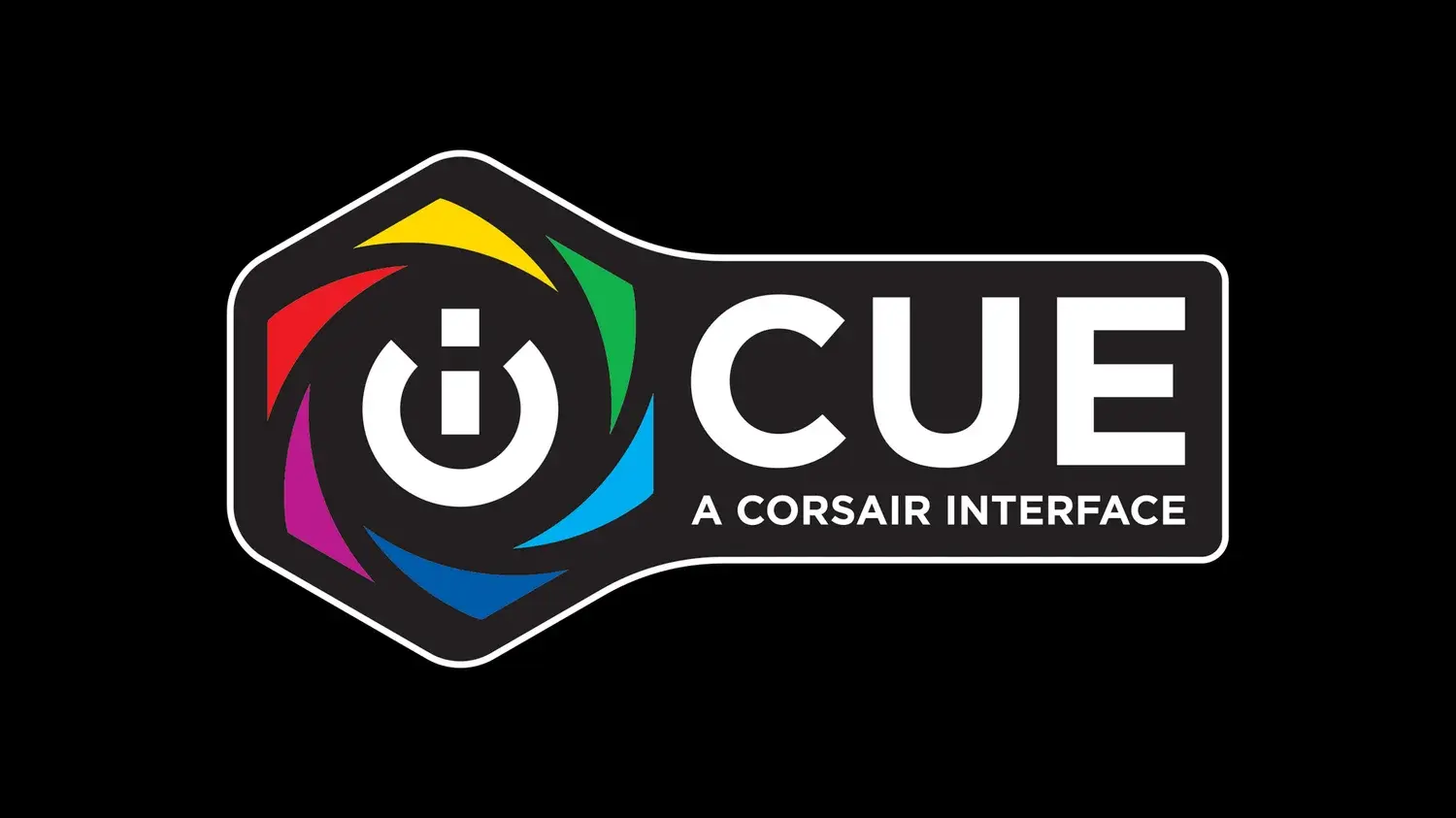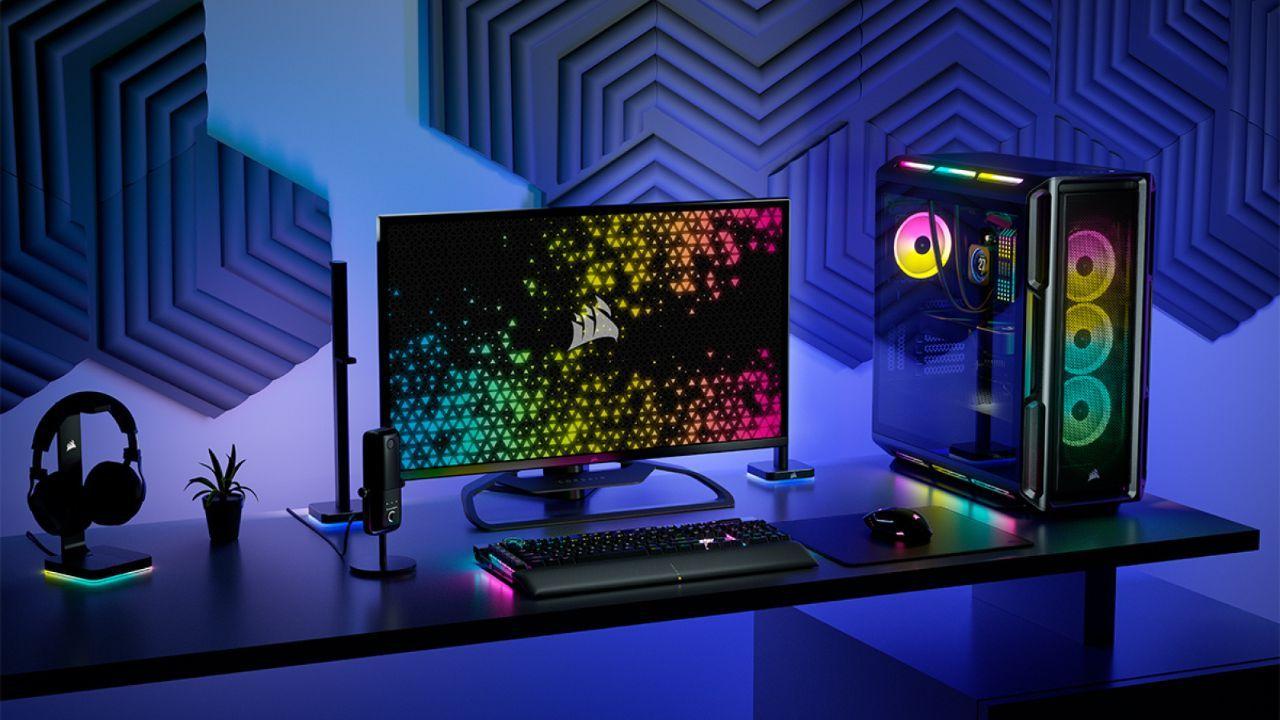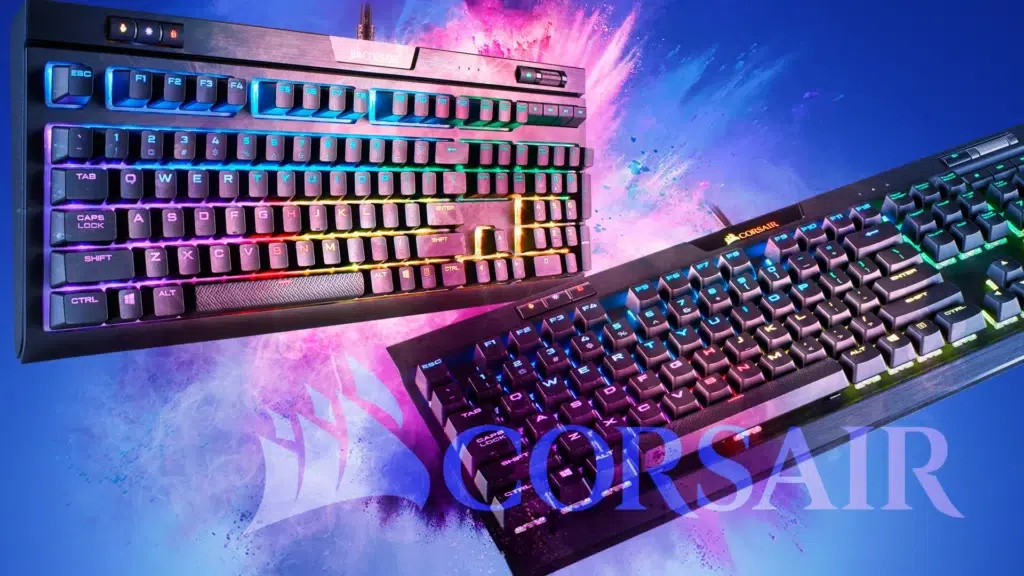- Disable iCUE from booting from Settings, Task Manager, or MSConfig for faster startup.
- Updates and repairs iCUE and firmware; prevents conflicts with interfering RGB suites and services.
- Fixes dependency errors by enabling .NET 3.5/4.8 and adjusts USB power for stable peripherals.

If iCUE appears to be taking up resources as soon as you turn on your PC, or if it doesn't start when it should, you've come to the right place. In this guide, you'll learn how to Disable iCUE from Windows 11 startup and, in passing, to solve the most common errors associated with its start-up and operation.
In addition to the practical part to remove it from the boot, we will integrate proven solutions: from Update or repair iCUE and firmware, to USB power settings when the keyboard lights turn off after locking the session, to a very useful fix with .NET Framework 3.5/4.8 for error 0xc0000135. We'll also look at how to isolate conflicts with other RGB programs and what options you have if you prefer to manage your lighting with alternatives. Let's learn everything about Corsair iCUE keeps starting on its own: How to disable it in Windows 11.
Why iCUE starts by itself or fails to boot

There are several reasons why iCUE may run at startup or behave erratically. First, Windows keeps a list of bootstrap applications and iCUE is likely enabled there; even if you disable it, it can be reactivated after an update if you don't also control it from within the program itself.
Another common cause is conflicts with other controllers or RGB suitesHaving multiple programs trying to manage the same lighting or read inputs from the same hardware at the same time is a sure recipe for problems. Suites like NZXT CAM, Asus Armoury Crate, MSI Mystic Light, or tools like Wallpaper Engine and the Riot Vanguard anti-cheat are documented as common sources of conflict.
We should not forget the factor of outdated softwareAn unpatched Windows, an older version of iCUE, or outdated firmware on Corsair peripherals can cause boot hangs, profiles that fail to load, or devices that shut down when the session is locked.
Finally, some startup failures come from .NET Framework dependenciesCertain applications require .NET 3.5 and .NET 4.8 components; when these are missing, you may see error 0xc0000135 or experience strange behavior that disappears when you enable them through Windows Optional Features.
Disable iCUE from startup in Windows 11
The most direct way is to do it from Settings. It's simple and effective, and allows you to control other startup apps to speed up startup time of the System.
- Open Settings (Win + I) > Apps > Start. Search for “iCUE” and turn off your switch.
A second option is through Task Manager. This is useful if you prefer to see the estimated startup impact of each program and manage everything from a single view, disabling iCUE so that does not charge when turned on the team.
- Press Ctrl + Shift + Esc > Startup Applications tab. Select “iCUE” and press Disable (up to the right).
If you're used to MSConfig, you can also get there from there. In Windows 11, MSConfig refers you to Task Manager for the startup part, so it's basically another route to achieve the same option.
- Win + R > type msconfig > Start tab > “Open Task Manager”. Inside, locate “iCUE” and disable it.
After these steps, restart your computer to confirm that iCUE is no longer running automatically. If iCUE still appears, check the program itself to see if it has any internal options enabled. activate iCUE with Windows after updating. While we're focusing on Windows controls here, it's worth taking a look at iCUE's internal settings if you notice it reactivating on its own.
Repair, update, and isolate conflicts in iCUE
First of all, make sure you have everything up to date. Keep Windows, iCUE and firmware of your updated peripherals reduces errors and fixes known incompatibilities. If you work with color and calibration, learn to Install the ICC profile on Windows 11 to ensure that display and screen color do not interfere with your workflow.
If you suspect installation corruption, repair iCUE from Settings > Applications > Installed Applications. Search for “iCUE,” open its menu, and select Modify to start repairIn stubborn cases, run the repairer more than once and reboot between attempts; it's a trick that has solved persistent problems.
With iCUE open, activate the automatic downloads for the software to get the latest drivers. On each connected device, check for new firmware; you can force the update from the three-dot menu after checking for updates. Connect peripherals directly to the PC (avoid USB hubs) and do not unplug or turn off anything while updating to avoid damaging the hardware.
If the locks won't let you get past the issue, boot Windows into Safe Mode with Networking and try to repair iCUE again or update firmwareThis environment loads a minimum of drivers and services, avoiding third-party interference during the process.
To isolate conflicts, delete residual modules from other Corsair products you no longer use, disable gaming and third-party integrations (Nanoleaf, Philips Hue), and close any software that controls lighting or inputs. Programs that commonly cause conflicts with iCUE include: NZXT CAM, Asus Armory Crate, MSI Mystic Light, Wallpaper Engine and Riot VanguardIf the error persists after all this, your case is likely unique, and it's a good idea to open a ticket with Corsair support with all the details.
Keyboard lights turning off or profiles not loading on startup
A common symptom is that, when starting or locking the session (Win + L), the keyboard loses lighting and you have to disconnect it and reconnect it to make it shine again. Here, in addition to checking iCUE, you should adjust the USB power settings in Windows to prevent the device from shutting down.
- Power Plan: Win + X > Power Options > choose High performance. Under “Change plan settings” > “Change advanced power settings,” turn off “USB selective suspend settings.”
- Device Manager: Right-click “This PC” > Manage > Device Manager > expand “Universal Serial Bus controllers”. In each “USB Root Hub”, select Properties > Power Management tab and uncheck “Allow the computer to turn off this device to save power”.
These settings prevent Windows from putting the ports or USB controller to sleep and therefore causing the keyboard to lose power or stop applying the profile when locking/unlocking. Complement this with the firmware updates of the keyboard from iCUE to correct possible failures of the device itself.
Error 0xc0000135 and .NET Framework dependencies (3.5 and 4.8)
Some Windows installations and updates disable .NET components that certain programs require. If you see the error 0xc0000135 or iCUE won't start without clear explanation, enabling .NET 3.5 and advanced parts of .NET 4.8 has resolved the issue for many users.
- Win + R > type optionalfeatures and hit Enter.
- Check “.NET Framework 3.5” and expand it; enable “Windows Communication Foundation (WCF) HTTP Activation” and “WCF Non-HTTP Activation.”
- Expand “.NET Framework 4.8 Advanced Services”; check “ASP.NET 4.8” and “WCF Services.”
- Accept, let Windows install the components and restart upon request.
After the restart, try iCUE again. If the error was due to these dependencies, the program should work normally, and if you wish, you can disable it from startup without reappearing due to errors.
Enter safe mode to diagnose and install
Safe Mode boots Windows with a minimal set of services and drivers. It's very useful when something external is preventing iCUE from working. be repaired, updated or even booted.
- Enter the Recovery Environment (WinRE): Force shut down three times. Hold the power button down for 10 seconds to shut down, then turn it on, and when you see Windows launch or the manufacturer's logo, hold it down again for 10 seconds to shut down. Repeat until "Automatic Repair" appears, then press "Advanced Options."
- Troubleshoot > Advanced options > Startup Settings > Restart. When you restart, press 4 for Safe Mode or 5 for Safe mode with networking.
Within that environment, try to repair iCUE, check for updates, or force update firmware on devices. By minimizing interference, it often unblocks problematic installations.
What you can configure in iCUE (and why you might not need it to boot into Windows)
iCUE is designed to be simple, but offers a lot of depth. On the general settings page for each device, you can update your firmware, adjust the backlight brightness, keyboard layout, or polling rate. On a keyboard, you can also clear the built-in storage or change the layout.
In “Actions” you assign functions per key and manage the macro editor: record with REC, add delays, mouse clicks, advanced triggers (for example, execute on release instead of on press), repetitions and startup behaviors (sounds, lighting associated with the macro, etc.).
The “Lighting Effects” tab allows you to create layers and combine them by priority. The higher up an effect is, more priority will have. So, a static color effect across the entire keyboard can be overshadowed by one that colors the WASD yellow, or a “key down” effect that turns the key red for a second.
In “Performance” you decide which keys to disable in game mode (for example, the Windows key) and choose the colors for the lock, brightness, and profile indicators. These options are separate from the lighting tab and help you stay in control while gaming or working.
In mice, in addition to lighting and actions, you have the DPI section with sensitivity profiles (including the profile “Sniper” of the clutch button to temporarily lower DPI). You can assign colors to each level and disable jumps that you don't use. In "Performance" you can adjust, among other things, the distance at which the sensor stops acting when you lift the mouse and the option to improve pointer precision.
On headphones, you'll see battery status (if wireless), brightness, firmware update, voice commands on USB models, and auto power off. You have lighting effects and equalization presets (EQ)Pure Direct, Movie Theater, FPS Competition, Clear Chat, and Bass Boost, all editable and with the ability to create your own profiles. You can also enable/disable surround sound and adjust microphone volume and sidetone.
Beyond peripherals, iCUE can monitor system sensors using plug-ins from compatible brands. There are add-ons for Lenovo, ASUS, MSI, NVIDIA and Gigabyte, which allows you to view temperatures and the status of your motherboard or GPU from the same interface. Note that not all brands on the market offer compatible add-ons, so you may need other tools if your hardware isn't supported.
Updating firmware from iCUE is a basic process: it fixes bugs, adds features, and strengthens security. It's sometimes notified and installed in the background, but it doesn't cost anything. review manually from time to time and apply the new features to avoid strange errors that appear when you stay on old versions.
If you'd rather not use iCUE at startup because you just want simple, unified lighting, you have alternatives. OpenRGB is free and open source to centralize RGB from multiple manufacturers in one place. And if you're looking for a simpler option, Windows 11 includes "Dynamic Lighting" in Settings, which coordinates compatible peripherals with basic patterns without relying on multiple suites. Keep in mind that "Dynamic Lighting" isn't available in Windows 10.
What if none of this works?
If after disabling startup, repairing iCUE, updating firmware, adjusting USB power, enabling .NET 3.5/4.8 and trying in safe mode the problem persists, the most prudent thing to do is to contact the Corsair support and open a ticket. Provide all the steps you've already tried, Windows and iCUE versions, and connected devices; the more detailed you are, the better they'll be able to reproduce and resolve your issue.
With these guidelines you should be able to prevent iCUE launches when you turn on your PC, and at the same time correct the typical errors that accompany it: conflicts with other suites, crashes due to firmware or .NET dependencies, and those lighting blackouts when blocking the session due to USB power management. The ideal is to stay with a clean boot and a stable system, using iCUE only when you need it or leaving it ready to do its job without getting in the way.
Passionate about technology since he was little. I love being up to date in the sector and, above all, communicating it. That is why I have been dedicated to communication on technology and video game websites for many years. You can find me writing about Android, Windows, MacOS, iOS, Nintendo or any other related topic that comes to mind.
